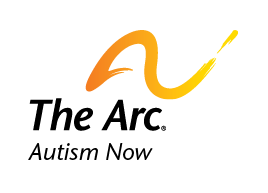Contemporary Applied Behavior Analysis Approaches
Contents
- What are “contemporary ABA” approaches?
- Are there specific contemporary ABA comprehensive programs that I can use?
- Incidental Teaching
- Where can I learn more about Contemporary ABA approaches?
- References
What are “contemporary ABA” approaches?
Contemporary Applied Behavior Analysis Approaches is a term that was coined by in 1998 to describe behavioral approaches that incorporate naturalistic and developmental practices into their approach (Prizant & Wetherby, 1998). The authors distinguish them from the traditional behavioral discrete-trial approaches often associated with the Ivar Lovaas and his colleagues at UCLA. Contemporary approaches are based on the principles of Applied Behavior Analysis (ABA). In other words they are based on the systematic analysis of the external factors that are likely to produce particular behaviors. These can include the setting, events that occur immediately prior to a behavior (antecedents), or those things that occur after a behavior that increase the chance that the behavior will occur again (reinforcement). Contemporary approaches differ in some significant ways from traditional behavioral discrete-trial approaches. These include:
- Greater control of the learning activities with teachers often being encourage to follow the lead of the child;
- More spontaneity in teacher/child interaction;
- Child selection of “the primary contexts and topics for communicative exchange;”
- Less structured and more natural interactions; and
- Adult being responsive to all a child’s attempts at communication including verbal, vocal or gestural lk
Contemporary ABA is sometimes referred to as naturalistic. In many ways the practices used in contemporary ABA overlap those used in developmental social-pragmatic approaches such as DIR/Floortime. There is some evidence that naturalistic ABA approaches are more effective than traditional discrete trial approaches in supporting language development in children with autism (Delprato, 2001).
Are there specific contemporary ABA comprehensive programs that I can use?
A number of comprehensive programs have been developed that could be described as contemporary ABA programs. These include pivotal response training, incidental teaching, the Early Denver Start Model, and Millieu Intervention. The first three are discussed below.
Pivotal Response Training: Pivotal response training or PRT was developed, in part, as a response to the perceived weaknesses of more traditional, highly structured, adult-directed approaches to using ABA. In particular, the developers of PRT were trying to overcome problems with generalization and prompt dependency. Generalization refers to the ability to use learned behaviors in multiple settings, with different people, and at different times. Prompt dependency occurs when a person learns a behavior but continues to need an external prompt.
PRT attempts to address these problems by focusing on teaching certain pivotal behaviors. These include: motivation, responsivity to multiple cues (in contrast to more traditional approaches in which children are taught to respond to a single discrete cue with generalization to other situations or people after the skill is learned), self-management, and self-initiations. Advocates of PRT believe that when students with autism learn these pivotal behaviors they will become more autonomous, be able to learn on their own, and that they will be able to easily generalize new skills (L. K. Koegel, Koegel, Harrower, & Carter, 1999). Core components of PRT include: clear and uninterrupted instruction, a mix of new tasks with those previously mastered, use of multiple cues, the use of natural reinforcers, reinforcement of child attempts at behaviors, the use of naturally occurring teaching opportunities, and child choice of activities. A number of studies have shown that PRT can be an lead to improved social and communication outcomes for children with autism (Humphries, 2003).
Incidental Teaching
Incidental teaching is defined as “a systematic protocol of instruction that is delivered in the context of the natural stimulus conditions of everyday environments…Specifically, incidental teaching requires that the environment be arranged to attract children to desired toys and activities. Children initiate incidental teaching episodes by gesturing or requesting a desired item or event, and the teacher prompts them for an elaboration in their initiation. Finally, they are given access to desired toys or activities contingent on producing an elaborated response” (McGee, Morrier, & Daly, 1999). Incidental teaching is designed to increase child initiation in natural environments, using natural reinforcers, and to build on a child’s already existing interests. Incidental teaching focuses heavily on communication. As with PRT, incidental teaching is based on the principles of ABA. Instruction is far less structured and relies much less on rote instruction than traditional discrete trial forms of ABA, however. The Walden Program for children with autism at Emory University uses utilizes incidental teaching. Consistent with their belief that instruction should occur in natural environments, the Walden Program uses an inclusive model. According to McGee et al. (1999) incidental teaching with young children with autism should occur in classrooms in which the ratio of typically developing peers to students with autism is at least 2 to 1. A number of studies have been done demonstrating the effectiveness of incidental teaching. Information on these studies can be found in the resource section below.
The Early Start Denver Model: The Early Start Denver Model (ESDM) is based both on the principles of ABA and developmental psychology. Its focus is on using play-based and relationship-focused routines to build play, social and communication skills in toddlers with autism. EDSM practitioners attempt to build on a child’s existing skills and interests through intensive, structured play. EDSM combines practices used in PRT with a developmental-relationship based approach. Positive relationships with care providers are considered an essential part of the intervention and cultivated by engaging in activities that children enjoy. EDSM was found to be effective intervention for toddlers in increasing IQ, adaptive behavior, and decreasing severity of diagnosis in one of the most rigorous studies ever completed of a comprehensive intervention for autism (Dawson et al., 2010). Researchers Sally Rogers and Geraldine Dawson have also recently published a detailed manual for parents and professionals entitled: Early Start Denver Model for Young Children with Autism: Promoting Language, Learning and Engagement (Rogers & Dawson, 2010).
Where can I learn more about Contemporary ABA approaches?
You can find more information online about each of the approaches described above at the following sites:
Pivotal Response Training
- Koegel Autism Center at University of California Santa Barbara – Home page of center where Pivotal Response Training was developed.
- Description of Pivotal Response Training – at the University of California San Diego Autism Intervention Research Program page.
- Two page introduction to pivotal response training (PDF).
- Online training module on teaching pivotal behaviors.
- The National Professional Development Center on Autism Spectrum Disorders page on Pivotal Response training – with links to general information about PRT, its implementation, and the evidence base.
- Brookes Publications link to book on using pivotal response training with children with autism – (R. L. Koegel & Koegel, 2006).
Incidental Teaching
- Research Autism site reviewing the research on incidental teaching
- Emory University Youtube Video: “The Autistic Child: Incidental Teaching”
- Emory University list of research articles on Incidental teaching
- Autism Connect site with introduction to incidental Teaching
- Using Incidental Teaching with children with autism
- Professional Development in Autism: Tip sheet on incidental teaching (PDF)
Early Start Denver Model
- EDSM Lab website – at University of California Davis Mind Institute
- Raising Children Network (Australia) description of the Early Start Denver Model
- Time article on ESDM
- Early Denver Start Model for Young Children with Autism: Promoting Language, Learning and Engagement
- Autism Speaks description of ESDM with links to videos
References
- Dawson, G., Rogers, S., Munson, J., Smith, M., Winter, J., Greenson, J., et al. (2010). Randomized, controlled trial of an Intervention for toddlers with autism: The Early Start Denver Model. Pediatrics, 125(1), 179-179.
- Delprato, D. J. (2001). Comparisons of Discrete-Trial and Normalized Behavioral Language Intervention for Young Children with Autism. Journal of Autism & Developmental Disorders, 31(3), 315-325.
- Humphries, T. L. (2003). Effectiveness of pivotal response training as a behavioral intervention for young children with autism spectrum disorders. Bridges: Practice-Based Research Syntheses, 2, 1-9.
- Koegel, L. K., Koegel, R. L., Harrower, J. K., & Carter, C. M. (1999). Pivotal response intervention I: Overview of approach. Journal of the Association for Persons with Severe Handicaps, 24(3), 174-185.
- Koegel, R. L., & Koegel, L. K. (2006). Pivotal response treatments for autism: Communication, social, & academic development. Baltimore, MD, US: Paul H Brookes Publishing.
- McGee, G., Morrier, M. J., & Daly, T. (1999). An incidental teaching approach to early intervention for toddlers with autism. Journal of the Association for Persons with Severe Handicaps, 24(3), 133 – 146.
- Prizant, B. M., & Wetherby, A. M. (1998). Understanding the continuum of discrete-trial traditional behavioral to social-pragmatic devlopmental approaches in communicatioin enhancement for young children with autism/pdd. Seminars in Speech and Language, 19(4), 329-350.
- Rogers, S., & Dawson, G. (2010). Early Start Denver Model for young children with autism: Promoting language, learning and engagement. New York: The Guildford Press.

